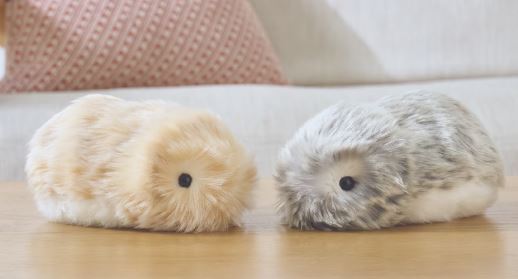
Moflin is the $400 AI-Powered Pet That’s Here to Help Your Mental Health
October 14, 2024If you’re feeling nostalgic for the Tamagotchis or FurReal Friends of the early 2000s but need something more adult, Moflin, a fuzzy AI-powered pet, might just be your new best friend. Priced at $400, this adorable, limbless fluff ball offers more than just cute looks — it’s designed to boost your mental health. Unlike other robotic pets, Moflin has emotional capabilities, meaning it reacts to its owner’s care and mood. With AI that evolves over time, it’s like having a digital companion who learns to connect with you emotionally.
Table of Contents
Moflin: Not Just Another Robot Toy
Moflin isn’t positioned as a toy but as a therapeutic, emotional companion. Think of it as an AI-powered guinea pig or a Ghibli-inspired creature that wriggles, coos, and snuggles, depending on its mood. It responds to touch, voice, and interaction through its embedded AI, developing its personality and emotional state based on the relationship with its human caretaker. But unlike a real pet, you won’t have to worry about feeding or cleaning up after it.
Moflin charges on its own tiny bed, mimicking the comfort of tucking in your favourite pet. And for those who love accessorizing their pets, some Moflin owners even dress their robots up in cute outfits, adding a touch of personalization to their experience.
AI Meets Emotional Connection
The standout feature of Moflin is its ability to recognize and adapt to your behaviour. Using an app, you can check its “emotional state” in real time, and you’ll see how the robot feels based on your interactions. It’s not about responding to commands or performing tricks like a traditional toy. Instead, it’s more about evolving alongside you, growing more affectionate or shy depending on how you treat it.
With sensors, Moflin recognizes how it’s being handled, and its AI algorithm shifts its behaviour accordingly. Whether you’re having a stressful day or feeling calm, your interactions with the plush robot will shape its responses, making the experience unique.
有楽町b8taのモフリンちゃんず!
— LOVOTラボ子(仮名)と親子Qoobo (@raboko6) October 13, 2024
可愛らしくうごうご🤭💕#moflin https://t.co/jkyu3Yd7lx pic.twitter.com/7zFGqHZQj6
The biggest question surrounding Moflin is whether its $400 price tag is justified. At that price point, it’s not a casual purchase for most people. Vanguard Industries, the creator, teamed up with Casio to finally bring Moflin to market, after debuting the idea back in 2021 at CES. The product is now available for pre-order in Japan, with plans for wider distribution.
Beyond the initial cost, Moflin also offers a $44 annual repair service through Club Moflin. This ensures your AI pet remains functional and in good health, especially as it becomes an integral part of your life.
The Future of AI-Powered Pets

While Moflin might not replace a real dog or cat anytime soon, it represents a growing interest in AI-driven emotional support. From virtual pets like Tamagotchi in the 90s to modern-day robotic companions, there’s an increasing demand for tech that provides comfort. Moflin taps into this trend, offering a low-maintenance, responsive pet that could be especially appealing to people living in apartments, those with allergies, or anyone who can’t take care of a real pet.
But beyond just being cute, Moflin reflects the larger trend of AI infiltrating everyday life. It shows how machine learning and robotics are moving into personal spaces like mental health and emotional support, aiming to enrich human lives without the logistical demands of real animals.
Final Thoughts
With its fuzzy design, evolving personality, and therapeutic benefits, Moflin is more than just a tech toy. It’s an emotional AI companion designed to offer comfort and companionship in an increasingly digital world. For those who have the means to invest, it may offer a much-needed emotional boost. But the question remains: Is it the future of mental health care, or just a luxury gadget?



